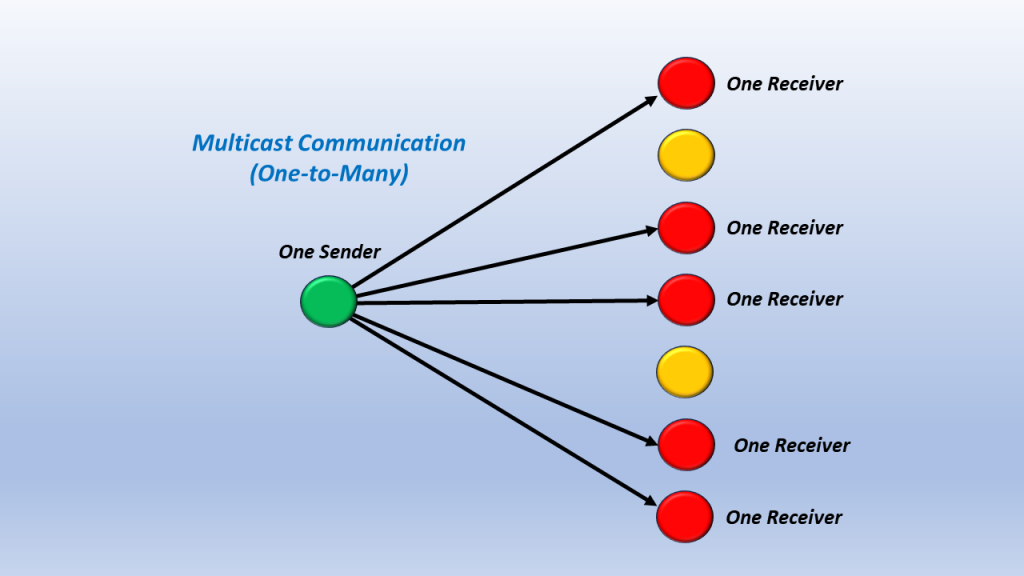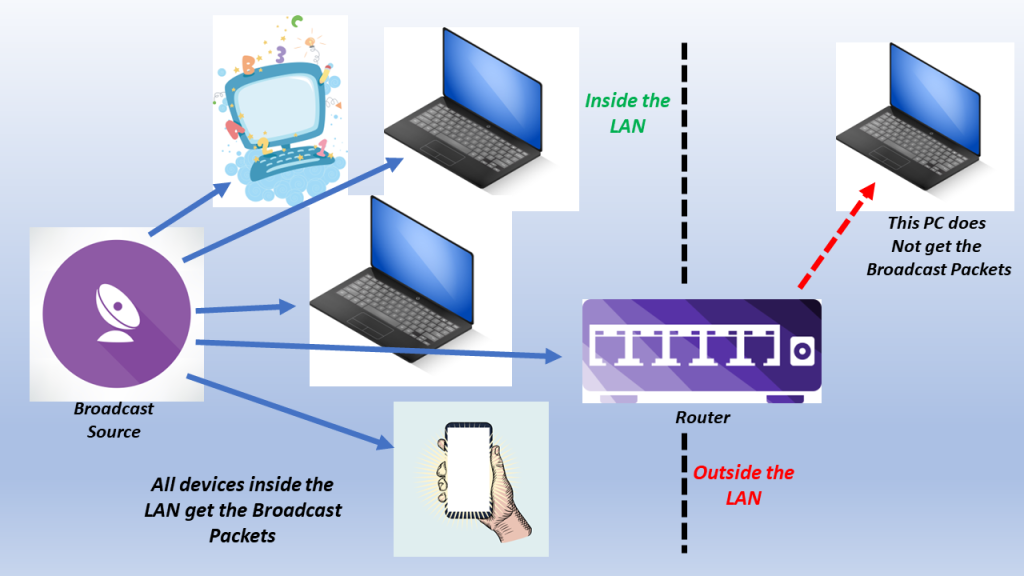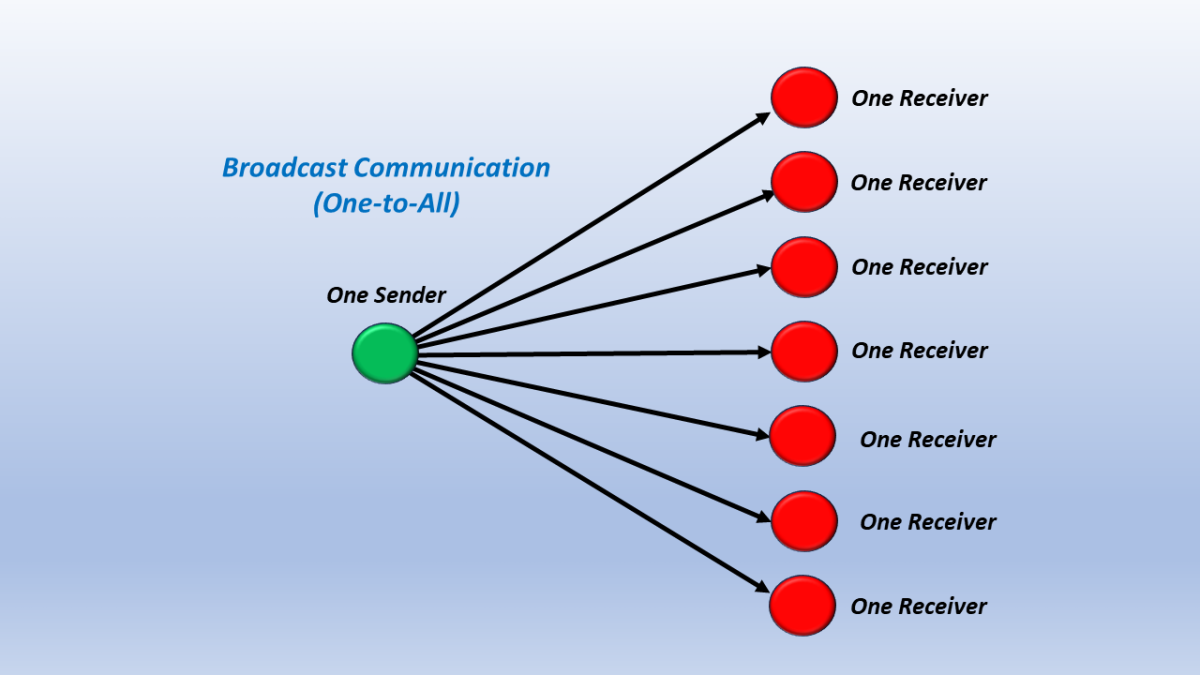In Computer Network Architecture, the three types of communication are:
These forms of communication can occur in Layer 2 (the Data Link Layer) and Layer 3 (the Network Layer).
NOTE: Layer 2 is the Data Link Layer. At this layer, the switch device works using MAC addresses for communication. Layer 3 is the Network Layer, where the router device uses the IP addresses for communication.
In this case, the word “cast” refers to how many people or devices we send data to. As I mentioned above, we can send data in a unicast, multicast, or broadcast manner.
I will briefly define these terms below.
Unicast Communication
Unicast: Means one-to-one communication. In this case, a single sender sends data to a single receiver or device.
I show a simple illustration of Unicast Communication below in Figure 1.

Figure 1, Illustration of Unicast Communication.
Multicast Communication
Multicast: This means one-to-many communication. In this case, a single sender sends data out to multiple devices in parallel. However, Multicast communication does not involve ALL DEVICES. Some devices on the network are excluded from this communication. This makes Multicast Communication different from Broadcast Communication.
I show a simple illustration of Multicast Communication below in Figure 2.

Figure 2, Illustration of Multicast Communication.
Broadcast Communication
Broadcast: Means one-to-all communication. In this case, a single sender sends data to ALL network devices. Broadcast is different from Multicast Communication in that (for Broadcast) the sender sends information to ALL devices and excludes no one.
I show a simple illustration of Broadcast Communication below in Figure 3.

Figure 3, Illustration of Broadcast Communication.
What is Broadcast Communication?
Broadcast is a type of data transmission where data is sent from one device to all devices on a network.
In a Broadcast transmission, every packet is addressed to the network’s broadcast address. This means that every device on the network will receive the packet.
It is a one-to-all transmission which means there is one sender, but the information is delivered to all the connected receivers.
Broadcast is used for scenarios where a single device must communicate with all network devices.
We mainly use the term “broadcast” for cable TV transmission, where a broadcast sends TV signals from one source (one point) to all the possible destinations (all points).
Broadcast Communication is useful in network management packets such as ARP (Address Resolution Protocol) and RIP (Routing Information Protocol), where all the devices must see the data.
NOT All Network Technologies support Broadcast Communication.
Not all network technologies support Broadcast addressing. X.25 nor Frame Relay do not support broadcast communication.
IPv4 (Internet Protocol Version 4), which is and has been the primary networking protocol for Packet-Switching communication, supports Broadcast Communication. However, in this case, the broadcast domain is the broadcasting host subnet (which is typically small). There is no way to do an internet-wide broadcast. Broadcasting is mainly confined to the local area network (e.g., Ethernet).
IPv6, which is intended to be the successor to IPv4, does not support broadcast communication. IPv6 relies on multicast addressing/communication instead.
I show an illustration of Limited Broadcast Communication below in Figure 4.

Figure 4, Illustration of Limited Broadcast Communication.
Figure 4 shows that all packets will go to each receiver within the LAN for Broadcast Communication. However, this form of communication does not go past the router (which is outside of the LAN). Broadcast Communication is mostly for LAN-only communication.
Broadcast Communication is mainly for “within a LAN” communication. In other words, it only sends packets to devices within its Local Area Network.
When working with IPv4 packets, the Broadcast Address is 255.255.255.255. Whenever the Broadcast sends packets to this Broadcast Address, all devices (within the LAN) will receive these packets.
Unicast and Multicast do not have this restriction. These forms of communication can send packets outside of their LANs.
Broadcast Communication within an Ethernet Network
I present how we can support Broadcast Communication within the Destination Address field, in an Ethernet frame, in another post.

